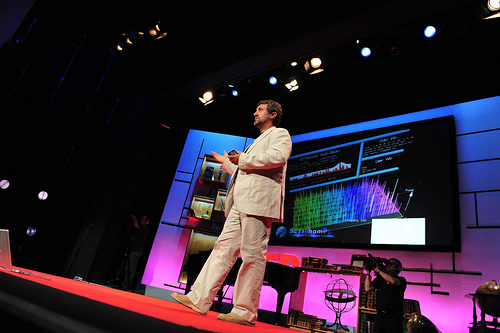
Israelian explores distant objects in the universe using spectroscopy. By looking at the spectral signature of distant object, he can infer the qualities and behaviors of the objects. He thinks spectroscopy will be how we finally discover whether there is life elsewhere outside of our solar system.
Israelian discovered that stars sometimes swallow their planets — not by direct observation of the event, but by looking at the spectral signature of a star, which indicated that lithium was present in the star. (Lithium, we know from physics, is not normally present in stars without them having devoured another type of object.) “The power of spectroscopy was actually discovered by Pink Floyd,” he joked.
We do not yet understand the spectrum of the Sun. 15% of the spectral lines we see from the Sun are not understood.
Supernovae, the largest disasters in space, are the only places where the elements required for planets — and for life itself — are created. We owe our existence to the existence of supernovas.
A colleague showed Israelian an interesting spectrum that included a huge amount of oxygen. This amount of oxygen had never been seen before. And the conclusion was that a supernova had occurred in a star system, and that explosion had created a black hole.
Our galaxy also includes some “alien” stars — they are stars that have come from other galaxies. When galaxies collide, some stars are left behind, and spectroscopy allows us to detect which ones are “foreign.”
He also looks at a binary star with a phenomenon called a “super flare.” What causes extremely large super flares? No one knows — but he hopes that the mystery of super flares will be finally explained by spectroscopy.
But first, we need to understand the whole evolution of the universe, and how the objects have been producing and recycling various chemical elements. It’s an extraordinarily complex study, and occasionally some anomalies appear. Those anomalies, Israelian thinks, may help us discover other life elsewhere in the universe. Biomarkers such as oxygen and ozone may indicate whether a planet is hospitable to life. In fact, water and methane have already been detected on distant planets outside of our solar system.
Photo: Garik Israelian at TEDGlobal 2009, Session 6: “Curious and curiouser,” July 22, 2009, in Oxford, UK. Credit: TED / James Duncan Davidson
Comments (1)